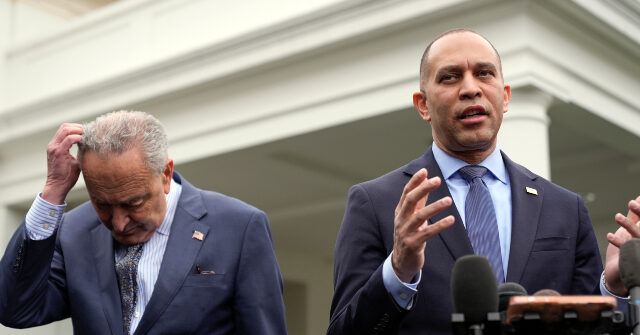The Democrat Party is hemorrhaging support with no end in sight, according to a shocking analysis of new voter registrations.
Fueled by President Donald Trump’s gains among men, younger voters, and Latinos in 2024, more new voters nationwide chose to be Republicans than Democrats for the first time since 2018, according to a report from the New York Times which relies on voter registration data compiled by L2, a nonpartisan data firm.
Perhaps more troubling for Democrats, the data suggests Democrat Party activists can no longer rely on the party’s tried-and-true methods to reverse the trend, leaving panicked party leaders and pundits unsure how to resurrect the party’s electoral prospects.
The numbers are staggering.
“Of the 30 states that track voter registration by political party, Democrats lost ground to Republicans in every single one between the 2020 and 2024 elections — and often by a lot,” the report reads. “That four-year swing toward the Republicans adds up to 4.5 million voters, a deep political hole that could take years for Democrats to climb out from.”
No states – red, blue, or purple – are immune to the trend.
More voters are choosing to be Republicans.
“All told, Democrats lost about 2.1 million registered voters between the 2020 and 2024 elections in the 30 states, along with Washington, D.C., that allow people to register with a political party,” the report adds. “(In the remaining 20 states, voters do not register with a political party.) Republicans gained 2.4 million.”
Many blue states, like massive California, register voters by party while many red states, including Texas, do not, so the number of nationwide registered voters by party does not tell the full story. But in those 30 states with partisan voter registration, Democrats’ eleven-point edge over Republicans on Election Day 2020 plummeted to just over six points in 2024, an alarming trend for Democrats.
“I don’t want to say, ‘The death cycle of the Democratic Party,’ but there seems to be no end to this,” Michael Pruser, director of data science for Decision Desk HQ, told the Times. “There is no silver lining or cavalry coming across the hill. This is month after month, year after year.”
More trends paint a similarly dire picture for Democrats.
By 2024, the Republican party’s share of new registered voters nationwide “had overtaken Democrats’,” rising by nine points compared to 2018, the report details, while Democrats’ fell by almost eight percent.
The shift from 2020 to 2024 was prevalent in the four swing states with partisan data available as well – North Carolina, Pennsylvania, Arizona, and Nevada.
Identifying the problem is likely to be far easier than fixing it.
Due to the makeup of Trump’s new Republican Party coalition, achieved through gains across multiple demographics, Democrats are unable to go back to the well of recruitment of racial minorities to reverse their downward trajectory. The Times report reads:
For years, the left has relied on a sprawling network of nonprofits — which solicit donations from people whose identities they need not disclose — to register Black, Latino and younger voters. Though the groups are technically nonpartisan, the underlying assumption has been that most new voters registering would vote Democratic.
Mr. Trump upended that calculation with the inroads he made with working-class nonwhite voters.
While blind registration of young people and minorities – assumed to lean Democrat – through nonprofits is relatively easy and inexpensive, identifying and targeting potential Democrat voters is incredibly more difficult and exponentially more expensive.
Donors to left-leaning nonprofits pursuing blanket registration of young and racial minorities get significant tax breaks, while those donors giving money to PACs and partisan political groups are not eligible for such write-offs.
Besides the additional fundraising hurdles faced by political groups compared with nonprofits, donors to those group see less return on their investment. The surgical work of searching, identifying, contacting, registering, and mobilizing voters by partisan political groups is wildly expensive, with the amount of money to successfully secure one Democrat vote running into the hundreds of dollars.
Dumping money into the existing framework is not a solution for Democrats, but no easy – or difficult – fix is apparent. Compounding the party’s problems is the lack of a leader or message.
If Trump and his movement’s heirs continue expanding the MAGA coalition, Democrats’ problems will grow with it.


















